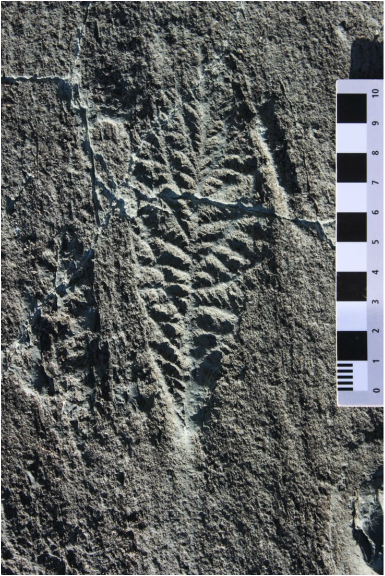BEOTHUKIS
BRASIER AND ANTCLIFFE, 2009
The genus Beothukis is considered to be important within the rangeomorphs because Beothukis specimens exhibit traits characteristic of both the rangid and the charnid groups of rangomorph. These two groups are distinguished by their branching architecture, as summarised in the figure below:
BRASIER AND ANTCLIFFE, 2009
The genus Beothukis is considered to be important within the rangeomorphs because Beothukis specimens exhibit traits characteristic of both the rangid and the charnid groups of rangomorph. These two groups are distinguished by their branching architecture, as summarised in the figure below:
Figure taken from Narbonne et al. 2009, showing the major characteristics of the rangid and charnid rangeomorphs.
Although Beothukis is characterised as a charnid, unlike both Charnia and Trepassia, it's primary and secondary branches have been described as 'weakly constrained', allowing them to exhibit morphologies much more like the rangid forms. By possessing both displayed high-order branchs and undisplayed, Charnia-like, primary branches, Beothukis has been considered an evolutionary intermediary that links taxa like Charnia with the rest of the rangeomorphs (Antcliffe and Brasier, 2009).
The frondose part of Beothukis is considered to have been oriented upright in the water column, with stalks of proportionally different lengths being present in the two species B. mistakensis and B. plumosa.
The frondose part of Beothukis is considered to have been oriented upright in the water column, with stalks of proportionally different lengths being present in the two species B. mistakensis and B. plumosa.
Beothukis Mistakensis
Brasier and antcliffe, 2009
|
A unipolar rangeomorph frond, sometimes described as 'spatulate' in shape, with primary branches becoming wider towards the margins of the frond. B.mistakensis differs from B.plumosa in possessing a zig-zag central axis and little to no stalk. Beothukis has, to date, only been found in Newfoundland.
Location: Mistaken Point, Avalon Peninsula Key papers: Brasier and Antcliffe, 2009 Narbonne et al. 2009 Liu et al., (2016) Diagnosis: A charniid with a single axis of growth and two rows of primary branches, each inclined towards the single terminal growth tip. First and second order branches show axes that tend to radiate away from the central growth axis. The biserial 'rangeomorph' structure of first-order branches is undisplayed and their margins are conjugate and furled. The structure of the second and third order branches is more clearly displayed and their margins are conjugate and furled. No secondary growth tips are present. |
Beothukis mistakensis from the 'E' surface of Mistaken Point, Newfoundland.
|
|
BEOTHUKIS PLUMOSA
LIU ET AL. 2016 Formally known as Culmofrons plumosa (Laflamme et al. 2012) Like B. mistakensis, Beothukis plumosa has furled and undisplayed first order branches, but second order branches that are displayed. There seem to only be 4-5 primary branches on either side of the frond, which is considerably fewer than the number seen in other unipolar rangeomorphs. Beothukis plumosa differs from its sister species in the presence of a longer stem, and a linear (rather than zig-zag) central axis. Beothukis plumosa appears to have been endemic to Newfoundland with no known specimens being recorded from other regions. Localities: Bonavista and Avalon Peninsulas, Newfoundland Key references: Laflamme et al., 2012 Liu et al., 2016 |
Beothukis plumosa from the MUN surface, Bonavista Peninsula, Newfoundland.
|
Diagnosis:
Frond unipolar and spatulate to ovate in shape, comprising two rows of primary branches (with fewer than five branches in each row) arranged alternately along a furled, often zigzagging central axis. Second-order branches (typically 8–12 per first-order branch, but reducing in number distally) are arranged in a broadly sub-parallel to radiating arrangement. A circular basal holdfast disc and a long cylindrical stem (comprising ~30 to 40% of the length of the organism) are present. A broad, smooth region is often present at the junction between frond and stem.
Frond unipolar and spatulate to ovate in shape, comprising two rows of primary branches (with fewer than five branches in each row) arranged alternately along a furled, often zigzagging central axis. Second-order branches (typically 8–12 per first-order branch, but reducing in number distally) are arranged in a broadly sub-parallel to radiating arrangement. A circular basal holdfast disc and a long cylindrical stem (comprising ~30 to 40% of the length of the organism) are present. A broad, smooth region is often present at the junction between frond and stem.



